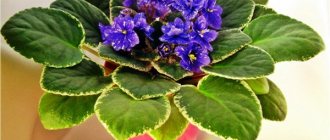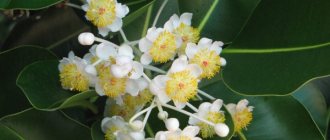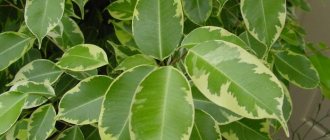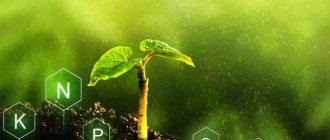What types of fertilizers are there?
Fertilizers are needed to stimulate plants. They help form the root system, leaves, flowers, and fruits. Fertilizers improve seed germination and survival, help weak and young plants take root and become strong. Agronomists divide fertilizers into several large groups. Organic fertilizers are a nutrient medium formed as a result of the vital activity of living beings. This is manure, bird droppings, humus, compost, peat. Organics are the mildest fertilizers in their effects. They are very difficult to harm the plant. At the same time, it is difficult to solve any specific problem with their help. Organics are universal, but do not have a narrowly targeted effect. Mineral fertilizers are products of the chemical industry. There are mineral macro- and microfertilizers. Macrofertilizers are the well-known trinity: nitrogen, phosphorus and potassium. Nitrogen helps the plant form leaves or shoots that are long, beautiful and green. Phosphorus is actively involved in the formation of flowers and fruits. Potassium is responsible for the plant’s immunity, its survival, and strength. Microfertilizers include other chemicals and elements that plants need, but in minimal dosages. They are usually included in complex fertilizers.
Let's especially talk about vitamins. Just like people, plants need vitamins. Experienced gardeners know how to feed a plant with vitamins so that the substance brings maximum benefit.
A little about vitamins – something you didn’t know about
Murzaeva Irina Yurievna
Endocrinologist, Preventive Medicine Doctor
September 23, 2018
Vitamins are classified as a subtype of micronutrients that are needed by the body in small doses - mcg or mg , but are needed constantly!! Many of the vitamins can influence the formation of the cell genome and, accordingly, influence reproduction and susceptibility to cancer. In our country, hypervitaminosis does not occur physiologically, but multiple vitamin deficiencies do. Deficiency can be of 3 degrees of severity:
- vitamin deficiency (complete absence),
- hypovitaminosis (partial absence),
- subnormal security.
Next they will write about each vitamin separately and in the form of a brief reference. Since vitamins are often closely related to microelements, I will mention them a little.
- The most common deficiency is a lack of B vitamins (B1, B2, B5, B6, B12), especially in schoolchildren. This is due to the predominance of refined foods and stress.
- Allergies to B vitamins (especially injectable ones) are often associated not with “the vitamin itself,” but with sulfites that stabilize the vitamin solution. And if you are allergic to injectable forms, you may not be allergic to tablet forms.
- B vitamins are better absorbed through the gastrointestinal tract, and are used in injections only for acute conditions (radiculopathy, neuritis, etc.).
- MYTH - B vitamins provoke cancer!!! Vitamins B1+B6+B12 do not affect tumor metastasis!!! And they even have an unpronounced antitumor effect.
- Vitamins B12 and D significantly reduce the risk of pancreatic cancer.
- Vitamin E and Selenium in the experiment increased the risk of bronchial cancer - ONLY IN SMOKERS! (more than 1 pack of cigarettes per day).
- Vitamin C + Iron + Manganese (Mn) is the best three for the treatment of IDA (iron deficiency anemia).
- Vitamin B12 + Iodine + Selenium = optimal prevention of autoimmune diseases (note!!! already developed pathologies are not meant ).
- Vitamin PP + chromium (Cr) = excellent option in the treatment of insulin resistance and obesity.
- Vitamin B2 (riboflavin) + magnesium = a great migraine treatment pairing!
- For better absorption of vitamins, movement is necessary! Physical inactivity weakens the absorption of all vitamins!
- To treat osteoporosis, the dose of vitamin D should maintain its concentration in the blood at least 40 ng/ml.
- In case of atopic dermatitis, dry skin syndrome, seizures, dry lips, conjunctivitis and recurrent furunculosis that are difficult to treat, there may be a genetic predisposition to impaired absorption of vitamins (this is a separate article) - today such an analysis is available in Russian practice.
- Boys are more predisposed to polyhypovitaminosis than girls.
- Frequent nausea without signs of infection is a common symptom of vitamin B1 and B6 deficiency.
- Leg cramps are often a deficiency of Iron, Magnesium, vitamins B1 and B6.
- A history of tuberculosis in relatives and a positive tuberculin test in a patient is an almost 100% marker of a genetic disorder in the absorption of vitamin D, which requires treatment with large prophylactic doses of vitamin D.
- Complivit is a vitamin that is suitable for daily use by almost everyone. Supradin - for acute respiratory viral infections and acute respiratory infections, in a short course.
- Folic acid for preparing for pregnancy and treating hyperhomocysteinemia is better absorbed in the form of methylfolate (the active form of folic acid).
- Rosveratrol with a low-calorie diet (low-calorie diet) will help prevent hunger attacks.
- Alphalipoic acid + myoinositol + magnesium + zinc = an excellent 3-month treatment regimen for asthenozoospermia .
- Q10 + Selenium + Omega-3 + Alphatocopherol (active vitamin E) = against the background of dyslipoproteinemia, they can become an alternative to statins in the absence of cardiovascular disease and severe degrees of atherosclerosis.
- Thioctic (lipoic acid) is the best way to treat fatty hepatosis today.
- Zinc + vitamin C in the 1st phase of the cycle/vitamin E + Copper + Magnesium in the 2nd phase of the cycle = a universal scheme for stabilizing menstrual irregularities.
- Large doses of selenium that are tried to be used in thyroidology, more than 200 mcg, are fraught with toxic effects!! A dose of 75-100 mcg is sufficient for the treatment of AIT.
- 25% of the population has a defect in the absorption of vitamin B12. This is expressed by the phenomena of neuropathy - periodic numbness of the toes and hands.
- Magnesium does not have to be combined with vitamin B6; it is perfectly absorbed without B6.
- If you have urolithiasis (urolithiasis) and take vitamin D, so that it does not fall out as a “calcium deposit,” you need to take magnesium citrate. And keep hydrated!
- Vitamin K2 is not as strong a stimulator of vitamin D absorption as it is “painted to be.”
- Vitamin A + Omega-3 = a good treatment regimen for dry skin and acne!
- Anemia and other diseases can impair the absorption of vitamin D by 30% or more. And including reducing its concentration in the blood!!!
- Preventive (safe doses) of vitamin D for adults - 2400-5000 IU/day.
- The adrenal glands accumulate the most vitamin C. A safe daily dose of vitamin C is 500-1000 mg; in the active form, doses can be much higher (but this is only a doctor’s decision!!).
- Zinc is lost quickly during hypothermia, which aggravates the course of acute respiratory infections and acute respiratory viral infections . An excellent solution is 50-70 mg of zinc for 5 days in acute conditions.
- Vitamin A+Selenium+Lutein = treatment regimen for diseases of the organ of vision.
- Algae-based omega-3s are a great alternative for those allergic to omega-3s from fish.
- It is better to take Omega-3 constantly; large doses are indicated only under the control of the Omega-3 blood index and blood platelet level!!!
- Phosphorus (+ calcium) for “strengthening bones” is needed more by children than by adults - in adults, phosphates predominate in food! For adults, vitamin D + calcium is preferred.
- Organic iodine, as well as inorganic iodine (potassium iodide), are absorbed with the same bioavailability. There is no need to isolate organic iodine.
- Vitamin E – proven prevention of bladder and kidney cancer (!)
- Unfortunately, active forms of vitamins are rarely found on the Russian market, which makes it difficult to use them to correct certain conditions.
- Vitamin B5 (pantothenic acid) is very important for the synthesis of steroid hormones, with adrenal dysfunction, for example, and has a healing property for erosive defects of the stomach, etc.
- Recently, science has begun to attract a lot of attention - chronopharmacology , which also studies the absorption of vitamins by time of day. For example, vitamin D and calcium are better absorbed in the evening!
To be continued ….
B vitamins for plants
Both seedlings and adult plants can be treated with vitamins. You can buy them in specialized stores or in a regular pharmacy (ampoules for injections). Vitamin B1 or Thiamine This vitamin helps the plant use its energy more efficiently. It improves growth and accelerates the circulation of internal juices. It is a good antioxidant for your garden. Thiamine quickly dissolves in water, so it is diluted and used for watering and spraying. Dilute it in a proportion of 1 ml per liter of water. Important: you need to treat plants with water with vitamin B1 in the evening, because the beneficial substance is destroyed in the light. It is also advisable to prepare the solution in a dark place. Vitamin B3 or Nicotinic acid This substance is needed if the plant for some reason “froze” - does not produce new leaves, does not bloom, does not branch. Nicotinic acid acts like a sex hormone, helping to “awaken” the reproductive functions of the plant. Unlike vitamin B1, nicotinic acid is not destroyed by light and works well in combination with other substances. It can be mixed with other fertilizers or even with organic matter. But if it is impossible to “overfeed” with vitamin B1, then you need to be careful with B3. 1 ml of vitamin B3 per liter of water is the maximum possible concentration! You should not exceed it. Watering should be done more often than once every one and a half to two weeks. Vitamin B6 or Pyridoxine hydrochloride Useful for sick or weakened plants. It will be useful to feed the plant with vitamin B6 after insect treatment. It is diluted similarly to other vitamins - 1 ml per liter of water. Ideal if combined with nicotinic acid. Treatment frequency is once every 10 days. Vitamin B12, or Cyanocobalamin This vitamin is directly involved in the process of photosynthesis and helps the plant produce chlorophyll. B 12 stimulates the saturation of plant cells with oxygen. It is best to use B12 in the fall or if the weather lets you down (heavy rains, cloudy weather, no sun for a long time). This is good support for house flowers in winter or those plants that overwinter at home (dwarf conifers, cypresses, etc.). Used once every 10 days, 1 ampoule of the vitamin is diluted in a liter of clean water.
Vitamins for plants
This topic has 0 replies, 1 voice, last updated
Marivana 2 years, 11 months. back.
Spraying plants with solutions of vitamin C, PP and B1 increases the intensity of photosynthesis, the content of chlorophyll and soluble carbohydrates, and has a positive effect on the accumulation of nitrogen compounds, promoting the synthesis of the protein part and the absorption of nitrogen. In addition, the presence of vitamins in fertilizing stimulates the absorption of phosphorus, sulfur, calcium by plant roots and reduces the absorption of chlorine. Vitamins accelerate the growth of leaves, delay their death and have a beneficial effect on the rate of plant development. A decrease in the content of thiamine and nicotinic acid in plants under insufficiently intense lighting and other unfavorable environmental factors may be one of the reasons for the inhibition of growth processes. Higher plants with a lack of vitamins cover their need for them by absorbing them from the soil. When growing plants under artificial conditions, the plants are deprived of interspecific symbiotic vitamin metabolism and suffer from vitamin deficiency. The artificial introduction of vitamins into the soil causes the proliferation of microorganisms beneficial to the plant. This, in turn, stimulates the accumulation in the soil of new substances necessary for plant nutrition. Such accumulation leads to increased plant yield in unfavorable conditions. Another positive result of using vitamins for growing plants is the stimulation of water retention in plant tissues (by approximately 28-68%) by reducing transpiration. The combined use of thiamine and nicotinic acid has a greater effect than their separate use when feeding. Some companies, in addition to vitamins PP and B1, include vitamin C in fertilizers. Vitamin PP (nicotinic acid (B3)) is a synergist of B1 and enhances its effect.
Vitamin B1 The effect of vitamin B1 on plants is: faster germination of seeds; in more powerful development of the root system, which helps plants more fully utilize soil nutrients; in ensuring faster growth and health of plants; in accelerating the flowering of plants and the formation of larger flowers. Treatment of plants with a solution of vitamin B1 is carried out by spraying, watering and injecting the solution. The effect is obtained by systematically exposing plants to a solution of vitamin B1. However, vitamin B1 should not be used during plant dormancy. Dilute one ampoule of B1 (thiamine) in a glass of water, a water-soluble vitamin, dip a match or something similar (not a cotton swab) into the solution and carefully transfer a few drops to the sprout.
Vitamin C Vitamin C promotes plant growth and acts as an antioxidant that helps plants resist drought, ozone and active ultraviolet radiation. Vitamin C also boosts the growth of plant crops.
Vitamin B12 (cobalamin, cyanocobalamin) – known as the “red vitamin”. It differs from the others in that it cannot be found in any product of plant origin. The fact is that neither plants nor animals synthesize it. Vitamin B12 is produced by microorganisms, mainly bacteria, blue-green algae, actinomycetes, and accumulates mainly in the liver and kidneys of animals. It helps obtain energy from food and is also involved in the production of DNA and RNA. B12 is involved in the formation of chlorophyll; this vitamin also saturates plant cells with oxygen. The use of B12 is especially important in autumn and winter, when we rarely ventilate the room and there is too little oxygen in the air.
Vitamins "Vitrum". We take 1 tablet for approximately 70 plants. Dissolve the Vitrum tablet in a small amount of vodka, after it has dissolved, add a little honey or a glucose tablet, as well as urea (you can buy it at a pharmacy or where they sell fertilizers). Mix everything thoroughly. We apply the finished composition with a brush to the growth point of the plants (according to N. Bazhanova, her Lofofora (a slow-growing plant) quite quickly increased in diameter by 1 cm, in almost one week). To accelerate the growth of seedlings, this composition cannot be used (until the first spines appear). But if you still want to stimulate the growth of seedlings, you can only use vitamin B-12 in ampoules. Vitamin supplementation not only accelerates growth, but also helps plants survive the winter better.
Vitamins: pyridoxine (B6), folic acid (B9), riboflavin (B2), nicotinic acid (B3), biotin (B7) were used for seed treatment. Soaking seeds for 6 hours in a solution of vitamins (concentration 20 mM) significantly improved the germination and vigor of seedlings and stimulated resistance to downy mildew..."
To improve fruit set, tomato flowers are treated with one of the following regulators: succinic acid - 40-60 mg/l, nicotinic acid - 100 mg/l, thiamine - 100 mg/l. Treat the brush when 2-3 flowers open in it. Treatment is carried out 2-3 times with an interval of 7 days..."
For pre-sowing treatment of cucumber seeds, it is better to use succinic acid - 0.4, sodium humate - 10-20, vitamins - thiamine - 10, nicotinic acid - 10 mg per 100 ml of water. Pre-sowing treatment of cucumber seeds with growth regulators and vitamins is carried out for 6-12-24 hours at a temperature of 17-18 °C. A freshly prepared solution is used for processing. It is not recommended to increase the duration of seed treatment by reducing the concentration of vitamins, because when seeds remain in solution for a long time, they become infected with microorganisms... The use of vitamins is especially advisable for treating seeds with reduced sowing properties...”
To feed indoor plants, seedlings and rose cuttings, which I cut before winter in the apartment, I use vitamin-mineral pet food from the Fitomina series for dogs and Radostin for cats. What, in my opinion, is the advantage of such feeding? Firstly, stimulation of plant growth and development does not occur due to shock doses of nitrogen, which is important. It is problematic to accurately calculate nitrogen standards without a preliminary laboratory soil analysis. The matter is further complicated by the limited volume of the pot and the high temperature of the soil when plants are kept indoors. At high temperatures, the process of absorption of liquid and nutrients by plants is accelerated, which can lead to an overdose, which is fraught with a tendency to disease and stretching of seedlings, seedlings and cuttings. Second. It’s paradoxical, but despite the fact that we get most of our vitamins from plants, we don’t give them to our pets. And vitamins are necessary not only for people and animals, but also for plants. Especially if they live in a city apartment. Secondly, vitamin and mineral supplements for animals contain vitamins A, B, C, D and E, which are necessary for the growth, development and maintenance of a strong plant immune system. The content of iodine, copper, selenium, and zinc in the fertilizer makes it a unique fertilizer; even expensive plant preparations do not contain these microelements. Zinc is a universal “manager” of microelements in a living cell; with its deficiency, all other elements “work” much worse. Calcium is in organic form, which significantly improves its absorption by plants and avoids negative side effects. The fact that these drugs are available in tablet form makes them easier to use. The tablet lasts a long time as it dissolves gradually. Depending on the volume of the pot and the green mass of the plant, I use from 2 to 5 tablets, which I bury 2-3 cm into the soil.
Today I sprayed my plants with vitamins B1, B12, B3 and succinic acid (a B complex tablet and a succinic tablet per 1 liter of water) to support them in the heat, plus there are some crops.
I fed ficus and palm trees with fertilizer containing vitamins (succinic acid, B1, C, PP). I fed it using the root method.
Some varieties of orchids - without mycorrhiza - are deficient in vit. PP (nicotinic acid) and react strongly to watering or spraying with its solution / this can even push the plant to bloom /.
succinic acid
Biological effects on plants Succinic acid is not a fertilizer, but has a positive effect on plants. It acts on the living organism of any plants as a natural activator (stimulator) of their vitality. Succinic acid is easily absorbed when seeds are soaked, and when sprayed it enters the plants through the leaves. The effect of succinic acid, regulating energy metabolism, is manifested already in very low concentrations (0.002% solution). Overdoses of the drug are not dangerous, since its excess is used by the plant and microorganisms as a food product. At the same time, experience shows that the maximum effect is achieved when using the recommended dosages of succinic acid. The earlier in the growth period of a plant it is treated with the drug, the longer the effect lasts. Treatment of seeds and young seedlings leads to consolidation of the effect of the drug throughout the life of the plant. Succinic acid - stimulates fruit formation. The drug has a beneficial effect on the activity of soil microflora, providing intensive biological processing of mineral fertilizers and restoring fertility and cleaning areas contaminated with toxic organic substances. The use of succinic acid protects against excessive accumulation of nitrogenous substances in plants when they are excessively contained in the soil, and prevents the accumulation of foreign toxins in the plant. The drug does not replace fertilizer, but ensures the active growth of a healthy, biologically complete, environmentally friendly, disease-resistant plant. Under the influence of plants and living cells, the drug decomposes into water and carbon dioxide, i.e. ideally and environmentally friendly to dispose of. Pre-treatment of planting material with a solution of succinic acid or watering plants once or twice during their growth increases the resistance of plants to adverse factors (drought, cold, excess or lack of moisture, insufficient light), reduces the incidence of plant diseases, increases the content of chlorophyll in the leaves, which is manifested in a more significant increase in yield. The drug provides up to 15 - 20% increase in the yield of root crops, cucumbers - up to 40%, and melons - by 30%. In plants and fruits, the content of biologically valuable substances increases, in particular, ascorbic acid, essential amino acids, the amount of sugars and organic acids, and the content of nitrates decreases. Succinic acid manifests itself, in comparison with a wide range of chemical compounds used in plant growing, as a moderate activator of their growth. Succinic acid ensures stable production of an increased yield of an environmentally friendly and biologically high-percentage product without the use of excess mineral fertilizers. Supply Succinic acid is supplied in tablets and powders along with detailed instructions for use. The drug is well stored. In dry form, the guaranteed shelf life is 3 years. Before use, succinic acid is dissolved in a small amount of warm water, and then brought to the required volume with cold water. It is advisable to use the finished solution within several days; subsequently, the drug is completely decomposed by microorganisms. No precautions are required when working with succinic acid. Pollution of the environment by the drug is completely eliminated due to its rapid consumption by the natural microflora of the soil. Exceeding the concentrations of the drug solution recommended for use will not harm your plants, however, it will not provide an additional positive effect. When resuscitating all types of plants, dosage is from 0.5 to 1 tablet per liter of water. When resuscitating orchids, use 1 tablet per 1 liter of water, then spray the orchid (roots, shoots, leaves) with the resulting solution. For indoor plants, it is advisable to use succinic acid no more than once every 2-3 weeks. Seed treatment Immediately before planting, soak the seeds in succinic acid for 12 hours, and also germinate the planting seeds in the prepared solution. Preparation - dissolve 2 g of succinic acid at room temperature in 1-2 liters of water. This seed treatment consolidates the effect of succinic acid throughout the entire development of the plant. Spraying of planted plants is carried out with a solution of 2 g per 20 liters of water before flowering and 2 g per 10 liters of water immediately after flowering. This application increases the plant’s resistance to frost, heat, summer drought, excessive humidity, etc.), increases the chlorophyll content in the leaves of the plant, which gives more intensive growth and the expected yield. Soaking the roots of seedlings Soaking the roots in a solution of 2 g per 1 -2 liters of water stimulates growth and improves root formation in general. Soaking time is strictly individual, and in each case is considered separately. You can soak the root from 30 minutes to 4 hours, but it is better not to soak the root for a long time. If it is not possible to soak the roots in the solution, then it is enough to spray the roots, shoots and leaves with a solution of succinic acid, then let the roots dry for 20-30 minutes, and plant them in a suitable pot. When watering plants, dissolve 1 g in 20 liters of water. Spraying 2 g dissolved in 5 liters of water and sprayed 2 times a week before flowering and at the beginning of fruit ripening. Processing potatoes Spraying potato tubers with the prepared solution is very useful. For better penetration of the substance into the tubers, it is recommended to cover them with film for 2 hours, then you can plant them or leave them to germinate. Spraying potato plants with a 0.01% solution of succinic acid accelerates flowering, potatoes are less affected by late blight, and the yield increases by 35-50 kg per hundred square meters. Spraying the plant with succinic acid can be carried out before flowering begins, the treatment can be repeated. Treatment of plants can be done in later periods of their growth, but the concentration of the solution should be 5-10 times higher, and treatment should be done more often. Treatment of tomatoes To increase productivity, spraying of plants is carried out during the budding period (40-60 mg/l) and repeated three times. The interval between treatments is 7 days. The solution consumption is 2 liters per hundred square meters. Treatment of the whole plant (vegetables, berries, flowers): generously spray the leaves of the plant with the prepared solution before flowering begins; the treatment can be repeated. Treatment of plants can be carried out in later periods of their growth, but the concentration of the solution should be 5 - 10 times higher, and treatment should be carried out more often. But the greatest effect is achieved when everything is done on time.
source
What else to buy at the pharmacy for your garden
Iodine, potassium permanganate, magnesium and glucose have definitely beneficial properties for plants.
Iodine accelerates growth and improves resistance to negative factors. True, you need to use it in minimal quantities: 1 drop per 2 liters of water. The iodine solution is added to the root a little at a time, literally ¼ cup at a time. If the plant has withered or lost its elasticity, you can give it a glucose solution. Similar to the human body, glucose will quickly invigorate the plant and give it strength. The tablet or ampoule is dissolved in a liter of water and the plants are watered or sprayed with this composition over the leaves.
A faint pink solution of potassium permanganate helps get rid of diseases and pests - the composition is sprayed on plants and watered at the roots.
Magnesia helps to form a powerful root system and resist chlorosis. For irrigation, dissolve 2.5-3 mg of magnesium sulfate (crystalline powder or ampoules) in a liter of water.










